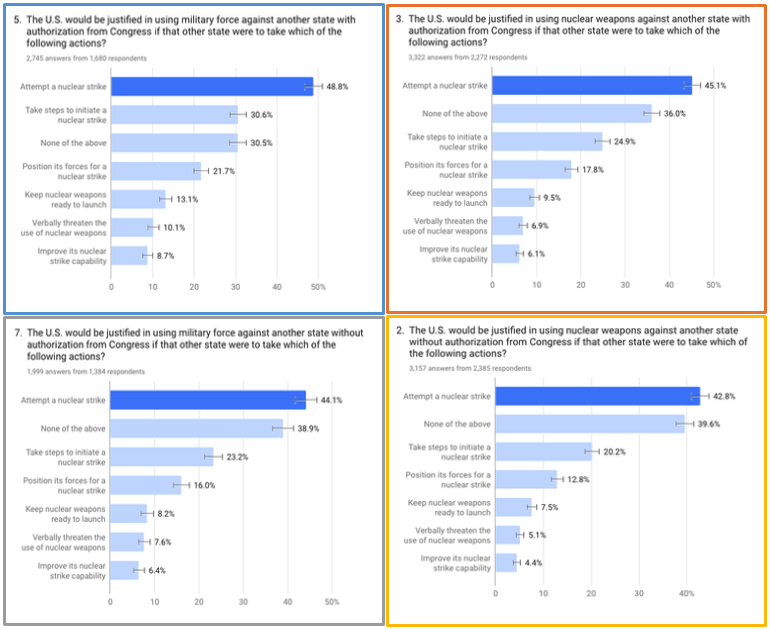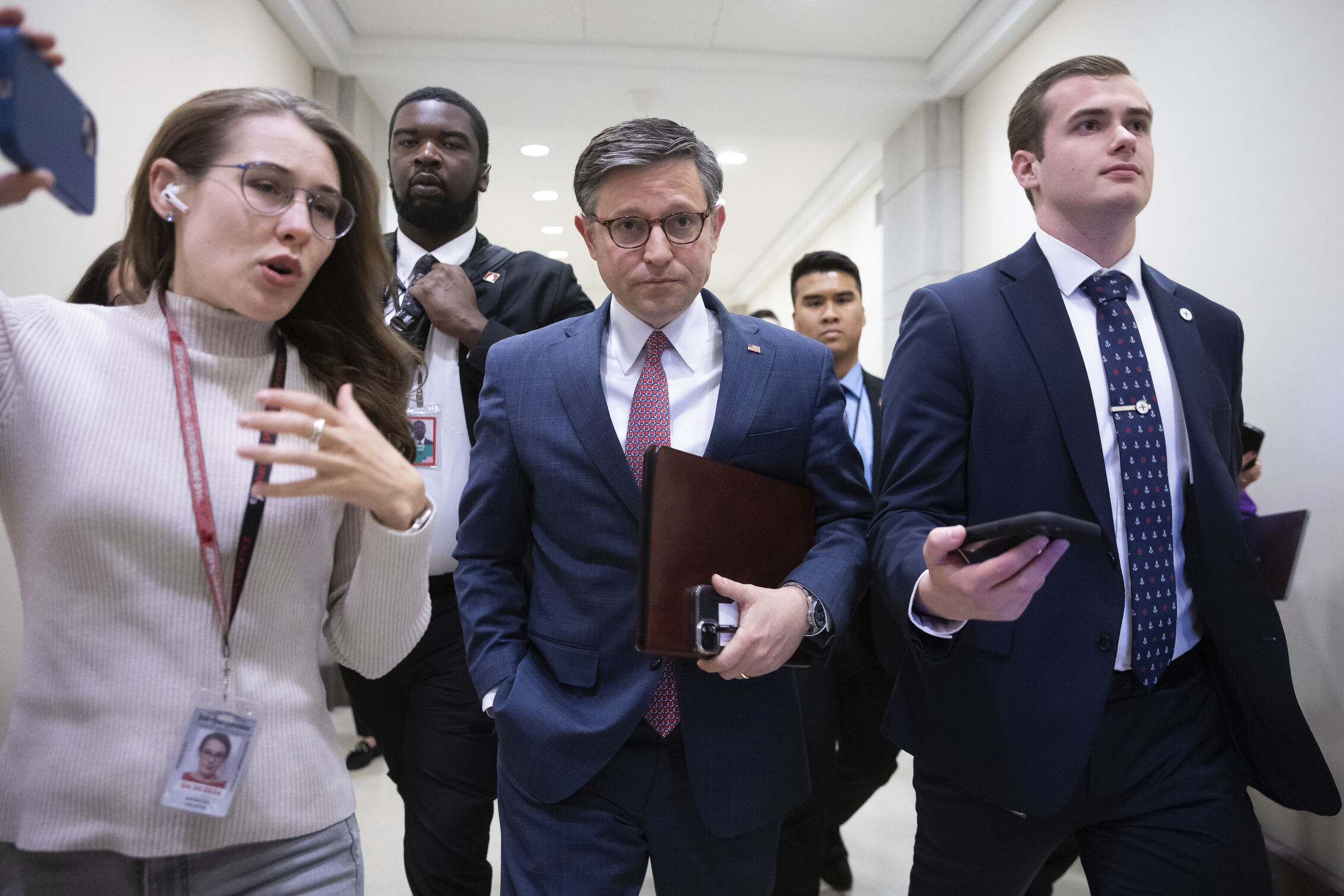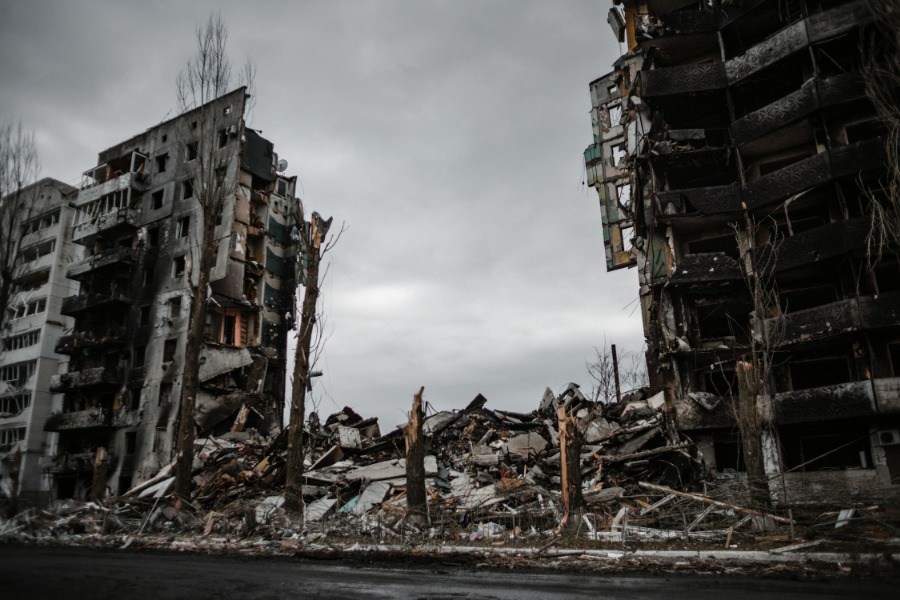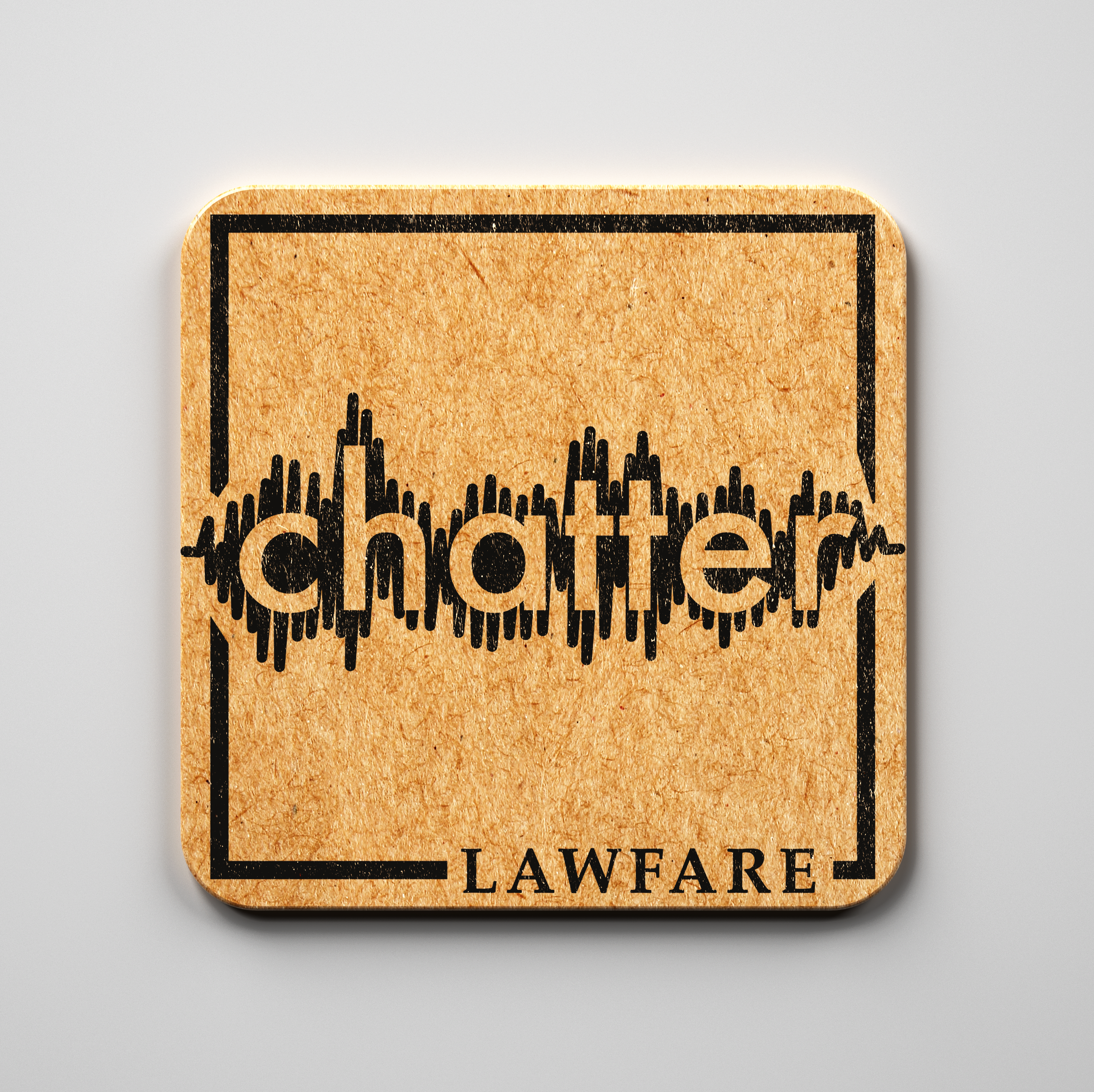Law and Public Intuition on the Use of Force, Part 3: Views on President Trump and North Korea
This post is the third in a multipart series. For an introduction to the surveys being discussed and the methodology that the authors employed, read their first post here.
Published by The Lawfare Institute
in Cooperation With

This post is the third in a multipart series. For an introduction to the surveys being discussed and the methodology that the authors employed, read their first post here.
In January 2018, tensions between the United States and North Korea seemed to be reaching a breaking point. Seven months earlier, North Korea had released a comatose American college student from captivity who died days later. Pyongyang followed this with its first test of an intercontinental ballistic missile purportedly capable of striking the U.S. mainland with nuclear weapons, provocatively timed to correspond with the July 4 holiday. In response, Congress passed, and President Donald Trump signed, significant sanctions in August 2017. Trump also escalated his rhetoric toward the regime, threatening it with “fire and fury” and total destruction if it continued to develop its nuclear and ballistic missile programs and belittling North Korean dictator Kim Jong Un as “Little Rocket Man” among other pejoratives. North Korea responded with not only its own harsh words but additional weapons tests, continuing the cycle of escalation. By the new year, Trump had resorted to comparing the size and effectiveness of the two countries’ respective “nuclear buttons,” suggesting in almost farcical terms that conflict was imminent.
Tensions between the United States and North Korea have since unexpectedly eased. But this was the heated environment in which we administered a collection of surveys on Americans’ intuitions regarding when the use of military force is justified. As we discussed in the first post in this series, the responses we received show a strong correlation between when Americans view the use of force as justified and several key factors that bear on whether a use of force is lawful under domestic and international law. Further, as we wrote in our second post, this pattern largely held true even when respondents were presented with scenarios in which the United States was threatened by nuclear weapons. This casts doubt on whether the proposition that nuclear threats justify an expanded view of preemptive military action—a proposal frequently made in relation to North Korea—would receive popular support.
The survey discussed in our first two posts, however, presented respondents with hypothetical situations in which the United States needed to respond to a threat from an unnamed foreign country. Would respondents feel the same way in a real-world scenario? After all, Americans have expressed different levels of confidence in how different U.S. leaders have approached matters of foreign policy and national security. What’s more, previous studies have suggested that Americans may be more willing to support the use of force in scenarios involving contemporary adversaries: for instance, a recent study showed that American respondents were more likely to support the hypothetical use of nuclear and conventional military force against Iran, an adversary pulled from the headlines, than they were to support the historical bombing of Hiroshima where both presented similar strategic considerations.
In this post, we set out to examine whether respondents express different views on when the use of force is justified if faced with questions about particular U.S. leaders or foreign countries about whom they have likely already formed opinions. To do so, we compare respondents’ reactions to the hypothetical situations discussed in our prior posts to how they react in almost identical situations that specifically identify the U.S. decision-maker and foreign state involved. Our goal is to better understand whether American views on when the use of force is justified change based on who is in charge or the source of the threat.
Designing Our Variant Surveys
To present respondents with more real-world scenarios, we conducted three variants of the “control” survey we discussed in our prior posts. Each substituted out generic hypotheticals for more specific ones taken from recent headlines: a response to potentially threatening actions by North Korea, at the initiation of President Trump. Our “North Korea impact” survey replaced references to the generic foreign country threatening the United States with “North Korea.” Our “Trump impact” survey replaced references to “the United States” with “President Trump.” Our “North Korea and Trump impact” survey made both of these changes. Other than this, each was identical to the control survey, which we described at length in our prior posts. Comparing the following sample question from our North Korea and Trump impact survey to the corresponding question in our control survey (which is also reproduced below) shows how we implemented these changes:

To analyze how identifying President Trump as the U.S. decision-maker or North Korea as the foreign state (or both) impacted respondents’ views, we compared the results of our variant surveys to the results of our control survey. The latter are included below for reference. The first set of four charts shows the responses to control-survey questions relating to potential military threats, while the second set shows the responses to questions relating to potential nuclear threats.:
Control Survey Results (Military Threats)

Control Survey Results (Nuclear Threats)

The colored borders surrounding each question correspond to bar charts that we use to compare the results of our variant surveys to the results of our control survey. We present them in pairs, one for questions relating to military threats and one for questions relating to nuclear threats. Below is an example of one such chart, taken from our analysis of the North Korea impact survey later in this post:
Sample Chart: North Korea Impact Survey vs. Control Survey (Military Threats)*

* The colored boundaries of the control survey questions reproduced earlier in this post match the colors used in this chart for the corresponding questions in our variant surveys.
Per the legend, each colored bar represents one of the questions that we ask in each survey regarding the use of a specific type of force (i.e., military force or nuclear weapons, congressionally authorized or not). The possible responses are listed along the Y-axis, in what we estimate to be the descending order of imminence (aside from “None of the above”). Each bar reflects the difference in the percentage of total respondents who selected that response in the variant survey and the percentage of total respondents who selected that response in the control survey (or, in some cases, another variant survey). For example, on the above chart, the second orange bar from the top indicates that 2.1 percent more total respondents believed that the use of nuclear weapons with congressional authorization would be justified if North Korea were to “Attempt a military strike” than if a generic foreign state did the same. This reflects the fact that while 34.3 percent of respondents gave this response to the corresponding question on the control survey, 36.4 percent of respondents gave this response on the North Korea impact survey.
Like our control survey, the results in each variant survey were derived from separate weighted populations of 1,000 online respondents taken from an initial pool of approximately 11,000 possible respondents. The Google Surveys platform then weighted the results of each to proportionally represent the U.S. population of adult (i.e., 18 or older) internet users according to their inferred age, gender, and geographic region in the United States. Across the three variant surveys and the control survey, the margin of error for the results of any given question ranged from +/- 0.7 percent to 2.6 percent. To take this variability into account, we focus our analysis on instances where there were substantial differences between the two surveys being compared or a consistent trend in differences across multiple questions.
North Korea as Foreign Adversary
Our first “North Korea impact” variant survey identified North Korea as the foreign state engaged in potentially threatening behavior. Given North Korea’s hostile relationship with the United States in January 2018, we expected that the number of respondents who saw the use of military or nuclear force as justified in response to threatening actions by North Korea would be greater than those who considered such action as justified in relation to a generic foreign state. Our results, however, were slightly more complicated, as reflected in the following charts.
North Korea Impact Survey vs. Control Survey (Military Threats)

North Korea Impact Survey vs. Control Survey (Nuclear Threats)

Generally speaking, respondents were slightly more likely to view the use of force as justified in response to conventional military threats posed by North Korea compared with similar actions by a generic foreign state in the control surveys. For example, the number of respondents who answered “None of the above” when asked whether various uses of force would be justified in response to possible military threats dropped 0.6 percent to 4.1 percent when North Korea was identified as the foreign state. Yet respondents were between 0.6 percent and 3.1 percent less likely to view use of force as justified in response to attempted nuclear strikes by North Korea or North Korean steps to initiate a nuclear strike compared with similar actions by a generic foreign state. We suspect that this may reflect a concern on the part of some respondents over escalation of a potential nuclear conflict between the United States and North Korea. In addition, respondents were consistently between 1.1 percent and 2.9 percent more likely to view the use of force against North Korea as justified in response to efforts to “[i]mprove its nuclear capability.” This may indicate that some respondents found such actions more threatening when pursued by North Korea as opposed to a generic state and thus were more willing to consider preemptive military action.
Some outlying points in our results, however, are not consistent with this trend and do not have an obvious theoretical explanation. Most notably, we were surprised that 4.5 percent fewer respondents answered that the use of congressionally authorized military force would be justified if North Korea took “steps to initiate a military strike” than if the same action had been undertaken by an unnamed foreign state.
The most notable result of our North Korea impact survey, however, may actually be the degree to which its results closely resemble those from our generic control survey—not the limited differences between them. Like our control survey, the North Korea impact survey shows a strong correlation between when the American public views the use of force as justified and the presence of certain factors relevant to its legality. This shows that this correlation (which we discussed at length in our first two posts) is a robust one—indeed, robust enough that it holds even when a hostile adversary like North Korea is involved.
President Trump as U.S. Decision-Maker
The questions in our second variant survey, the Trump impact survey, identified President Trump as the relevant decision-maker acting on behalf of the United States. Many presidents experience a surge in popular support—often called the “rally around the flag” effect—when facing an acute international crisis, though the effect can vary and such support is not necessarily sustained over time. That said, we were not sure whether to expect such a phenomenon in anticipation of a crisis given that a majority of Americans disapproved of Trump’s handling of foreign affairs at the time we administered our surveys. We hypothesized that respondents would be less likely to view the use of force as justified here than in the control survey, reflecting doubts about the president’s judgment and a lack of confidence in his foreign policy decision-making. As the following charts show, this hypothesis generally proved accurate, though in some surprising ways.
Trump Impact Survey vs. Control Survey (Military Threats)

Trump Impact Survey vs. Control Survey (Nuclear Threats)

When presented with scenarios in which President Trump was the U.S. decision-maker instead of a generic “United States,” respondents were substantially more likely to indicate that the United States’ use of force would be justified in “none of the above” scenarios—especially when the use of force at issue was not congressionally authorized or involved nuclear weapons. For example, when asked about President Trump’s use of military force without congressional authorization, 4.6 percent more respondents felt that the use of force would be justified in none of the scenarios—and 6.4 percent more respondents said the same when faced with questions about the United States’ use of nuclear force in response to conventional military threats by a generic foreign state. Similarly, 4.3 percent and 7.0 percent fewer respondents viewed the use of military or nuclear force, respectively, as justified in response to an attempted nuclear strike when Trump was specified as the decider.
Yet this “Trump effect” became less pronounced as the severity and imminence of the threat decreased. When presented with scenarios in which a foreign adversary verbally threatened the use of military force or nuclear weapons or sought to improve its military or nuclear strike capabilities, respondents were not substantially less likely—and in a few cases were even slightly more likely—to view the use of force by the United States as justified. This most likely reflects the fact that relatively few respondents viewed the use of force as justified in such scenarios in the first place, regardless of the U.S. decision-maker. Alternatively, it may suggest that respondents were less sensitive to concerns regarding Trump’s judgment when the actions by the foreign state in question were less directly threatening, meaning that the risk of consequences to the United States due to an error on the president’s part was lower.
Once again, these results reinforce the correlation between American views on the use of force and factors relating to its legality that we discussed in our first two posts. Indeed, when President Trump was presented as the U.S. decision-maker, this correlation strengthened: Respondents proved more skeptical of uses of force that lacked congressional authorization or were less proportional (such as the use of nuclear weapons).
Combining Scenarios
One might expect the results of our North Korea and Trump impact survey to look like a synthesis of the results of the two variant surveys discussed above, combining the concerns that some respondents appeared to have in relation to North Korea with a general skepticism regarding President Trump. Instead, as shown in the following charts, we discovered that these variables interact in some unpredictable ways:
North Korea and Trump Impact Survey vs. Control Survey (Military Threats)

North Korea and Trump Impact Survey vs. Control Survey (Nuclear Threats)

Generally speaking, respondents were more likely to view decisions by President Trump to use force against North Korean threats as justified than similar decisions by a generic U.S. leader against an unnamed adversarial state. This trend was most pronounced in situations where Congress had authorized the use of force in question, as reflected in the decrease in the total percentage of respondents who found the congressionally authorized use of force to be justified in “none of the above” scenarios involving military threats: 5.4 percent fewer when conventional force was authorized, and 2.7 percent fewer when nuclear force was authorized. As with the results to our North Korea impact survey, this trend was most evident in circumstances involving less imminent threats, such as North Korea keeping its military or nuclear weapons ready to launch or improving its military or nuclear strike capabilities.
This trend did not extend, however, to the use of force without congressional authorization, especially in response to more imminent North Korean nuclear threats. Without congressional authorization, 1.6 percent and 4.3 percent more total respondents viewed the use of military and nuclear force, respectively, as justified in “none of the above” scenarios compared with the results in our control survey. Similarly, with Trump at the helm of a response to an attempted North Korean nuclear strike, 2.6 percent and 3.7 percent fewer respondents viewed the use of military or nuclear force, respectively, as justified without congressional authorization.
Comparing the results from our variant surveys to each other sheds some additional light on how the factors at play interact in these different scenarios. The charts below illustrate the differences in results between our North Korea and Trump impact survey and our North Korea impact survey. In other words, they highlight what impact the introduction of Trump as the U.S. decision-maker may have on respondents’ views regarding how to respond to threats from North Korea.
North Korea and Trump Impact Survey vs. North Korea Impact Survey (Military Threats)

North Korea and Trump Impact Survey vs. North Korea Impact Survey (Nuclear Threats)

Compared with similar actions by a generic “United States,” respondents were generally more likely to view Trump’s use of military force against North Korean military provocations as justified—so long as it was authorized by Congress. For example, with Trump as the decision-maker, 4.6 percent fewer total respondents indicated that the use of military force with congressional authorization would be justified in “none of the above” scenarios describing possible military threats by North Korea, while more respondents gave that answer when asked about the use of military force without congressional authorization or the use of nuclear weapons. Similarly, compared with a generic U.S. decision-maker, the share of total respondents who saw Trump’s use of congressionally authorized military force as justified in response to an attempted North Korean military strike or steps to initiate a military strike increased by 2.0 percent and 3.4 percent, respectively. This trend declined as North Korean actions posed less imminent threats. Indeed, when North Korea was presented as having kept military weapons ready to launch or positioned its forces for a strike, respondents were more likely to see any use of force as justified—even when the use of force in question was nuclear and not authorized by Congress. When the United States faced nuclear threats from North Korea, this trend expanded to include the congressionally authorized use of nuclear weapons. For example, regarding an attempted nuclear strike by North Korea, respondents were 2.4 percent and 2.1 percent more likely, respectively, to view Trump’s use of congressionally authorized military force and nuclear weapons as justified compared with identical scenarios involving a generic U.S. decision-maker.
In other words, with Trump as decision-maker, respondents were more likely to view the use of both military and nuclear force as justified in response to every North Korean action presented, so long as it was congressionally authorized. This is a notable departure from the results in the Trump impact surveys that included threats by a generic foreign state, rather than North Korea: In those cases, as discussed above, introducing Trump as the U.S. decision-maker made respondents almost categorically less likely to view the use of force as justified.
Comparing the results from our North Korea and Trump impact survey and Trump impact survey shows this contrast even more sharply:
North Korea and Trump Impact Survey vs. Trump Impact Survey (Military Threats)

North Korea and Trump Impact Survey vs. Trump Impact Survey (Nuclear Threats)

With President Trump as the U.S. decision-maker, respondents were substantially more likely to view the use of force as justified in almost every scenario involving threats by North Korea as compared to similar actions by a generic foreign state. Nothing exemplifies this trend better than the change in the number of total respondents who indicated that the use of force was justified in “none of the above” scenarios, which was 4.5 percent to 7.5 percent less for every use of force. This is once again a substantial departure from the results in surveys involving a generic U.S. decision-maker. There, identifying the threatening foreign state as North Korea led to far more mixed reactions, with respondents more likely to view the use of force as justified in some scenarios but not others.
Why would respondents be more skeptical of the use of force when Trump was introduced as the decision-maker in a scenario involving threats by a generic foreign state, but less skeptical when that foreign state is identified as North Korea? And why would they be even less skeptical than when the same scenarios referenced a generic U.S. decision-maker instead of President Trump?
In our view, the most likely explanation is that respondents more closely associated the questions in the North Korea and Trump impact survey with current events at the time the survey was administered: January 2018. Respondents’ general knowledge and understanding of specific aspects of the U.S.-North Korean relationship that were not addressed in the hypothetical scenarios we presented—as well as growing concerns about the real-world threat posed by North Korea—may have informed their answers, making respondents more likely to view the use of force as justified when North Korea is involved. Further, in strictly hypothetical scenarios, respondents’ views on whether a use of force by Trump would be justified may have relied heavily on their views regarding the president’s judgment, as only limited factual information was available about other aspects of the hypothetical scenario. In contrast, because respondents likely associated the North Korea and Trump impact survey with current events, they may have felt more confident in their own independent assessment of the appropriateness of the use of force.
Conclusions
While we have focused on the differences across the four variants of our public survey, the most surprising result may in fact be the similarities in their results. Only six responses across all three variant surveys had results whose difference from our control survey was +/- 5 percent of the total respondents. At a minimum, this seems to support the robustness of the main finding that we presented in the first two posts in this series: that American perceptions of when the use of force is justified correlate with certain factors that bear on whether that use of force is legal—even, as this post shows, where real-world actors are involved.
That said, the differences we observed were illuminating as well. Despite the real threat posed by North Korea, respondents’ views on when the United States would be justified in using force against Pyongyang did not substantially change from the control surveys—except for some marginally greater openness to more preemptive military action and a possible hesitancy to escalate a possible nuclear conflict. By contrast, identifying Trump as the decision-maker made respondents almost categorically more skeptical about the use of force against a generic foreign state, particularly when the use of force was not congressionally authorized or when the use of force in question would be nuclear—a shift that we believe reflects concerns among many respondents regarding President Trump’s judgment and decision-making.
Yet when we posed the question in terms of President Trump’s response to North Korean provocations, this trend reversed: respondents were instead more likely to view the use of force as justified, especially when Congress had provided its approval. We believe that this most likely reflects the fact that respondents strongly associated such scenarios with events in the news at the time the survey was administered and, as a result, may have been more inclined to support President Trump or to feel like they had more independent information supporting the conclusion that the use of force against North Korea would be justified, regardless of who the U.S. decision-maker might be. If we are correct, then this latter observation may provide a useful lesson to U.S. presidents and other leaders who are facing a lack of public confidence in their decision-making: If you believe that your case for the use of force is strong, then sharing the underlying information to inform the public and help citizens understand the threat and seeking support from Congress may help increase public support for such action.
Of course, this is not the only possible explanation. Differences among individual respondents may have made some more or less likely to view certain North Korean actions as threatening, or more or less skeptical of President Trump’s decision-making in various circumstances. In our next post, we’ll dig deeper into the results of our surveys to assess how different demographic segments of the American public view the use of force.






